 The mountains hang over Bogotá watchfully. Below them, Álvaro Clavijo is busy not giving a damn about culinary expectations. The El Chato logo sums it all up perfectly: a chicken foot clenched like a claw machine that would probably flip a middle finger at you if only it could.
The mountains hang over Bogotá watchfully. Below them, Álvaro Clavijo is busy not giving a damn about culinary expectations. The El Chato logo sums it all up perfectly: a chicken foot clenched like a claw machine that would probably flip a middle finger at you if only it could.
This defiance encapsulates everything about the chef and his approach to Colombian cuisine. Like a claw coming up empty-handed, Colombia let him slip through its fingers at first, he remembers. Or its kitchens didn’t offer him the opportunity he craved. So he left, becoming a dishwasher in Paris where he scrubbed pots while watching other chefs create the magic.
He worked his way up methodically, fighting for every inch of ground in some of the world’s most demanding kitchens. “The little opportunity I had in my native country pushed me elsewhere,” he says flatly. There’s no self-pity in his voice. Just facts. And he grasped the chance with both hands.
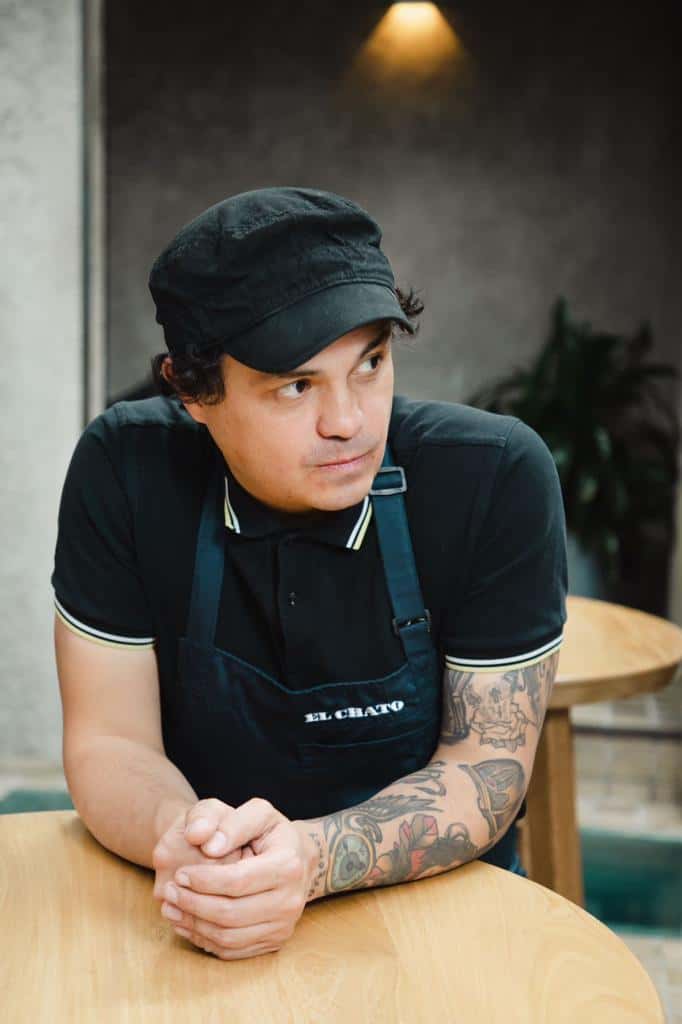
El Chato: A Declaration To The Homeys
Barcelona’s Hofmann Hospitality School gave him the structure that would underpin his creativity. Per Se in New York taught him precision and uncompromising standards. Robuchon showed him the kind of technical mastery that bordered on obsession. Noma revealed how a forgotten food culture could become world-renowned through a radical commitment to place. He absorbed it all like a sponge soaking up sweat – sucking in all that knowledge, technique, and determination.
When he returned to Bogotá in 2017, his pockets were empty but his head was full of ideas. He poured every peso he had into a space in the leafy, once-residential borough of Chapinero Alto and called it El Chato – Bogotá slang for ‘homey’ (he prints the faces of his homeys in the kitchen on the restaurant’s coasters, to celebrate them). It was a declaration that his place would speak to the streets rather than the elite dining rooms he’d worked in abroad.
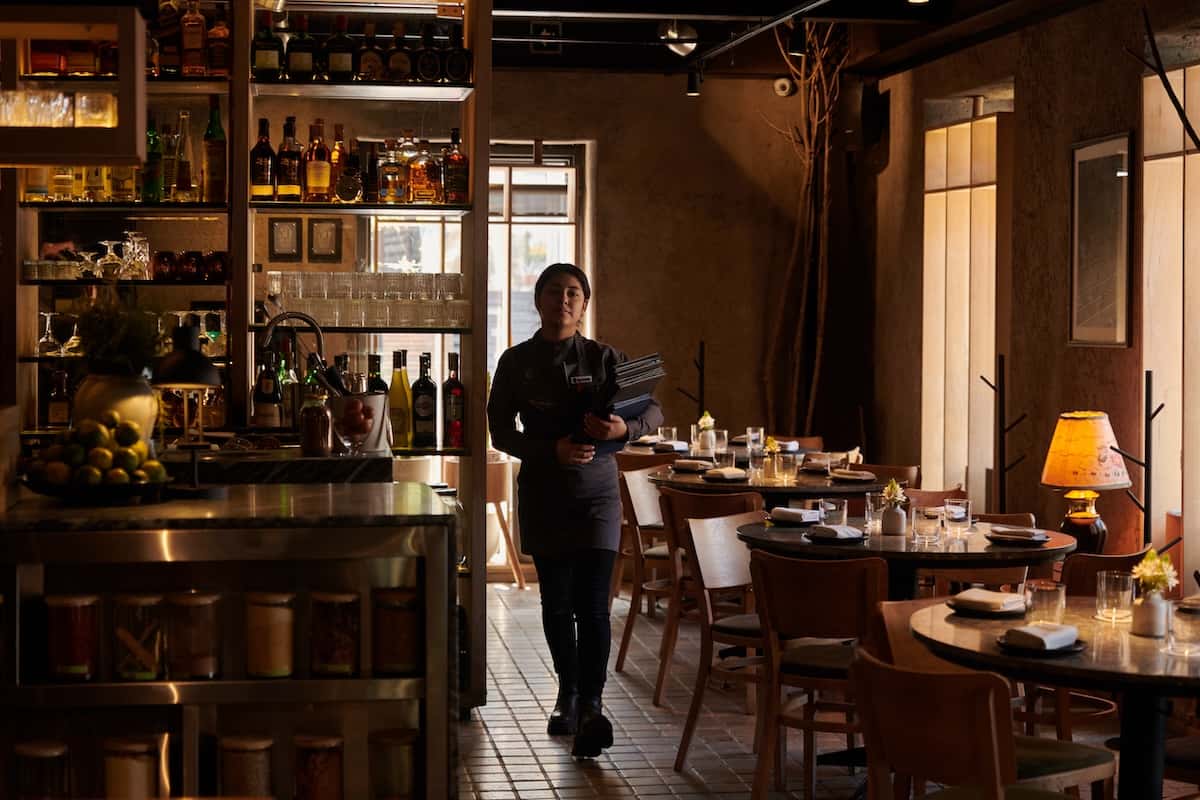
El Chato And Álvaro Clavijo’s Last-Minute Pivot Towards Local Ingredients
Two weeks before opening, Álvaro realized he was about to make a serious mistake. “I intended to serve dishes from around the world, nothing really local,” he admits. The mindset that positions European techniques above local ingredients almost won out. But something clicked inside him and he scrapped the international menu entirely and pivoted hard toward Colombia’s ingredients. The country that couldn’t satisfy his ambitions would now feed them.
But this isn’t the Colombian food grandma would make, though. Álvaro Clavijo doesn’t do nostalgia. He does provocation through flavors. Chicken hearts with candied native potato and suero costeño have been ever-present on the a la carte menu. The current tasting menu features fermented tamale, a big yellow mass with a fringe of greens, and a lamb’s tongue for main course. Each dish serves as both challenge and a middle finger of his own, forcing diners to confront their assumptions about Colombian cuisine.
Towards the end, they wheel over a trolley filled with a bounty of the fruits and vegetables from which the menu was made.
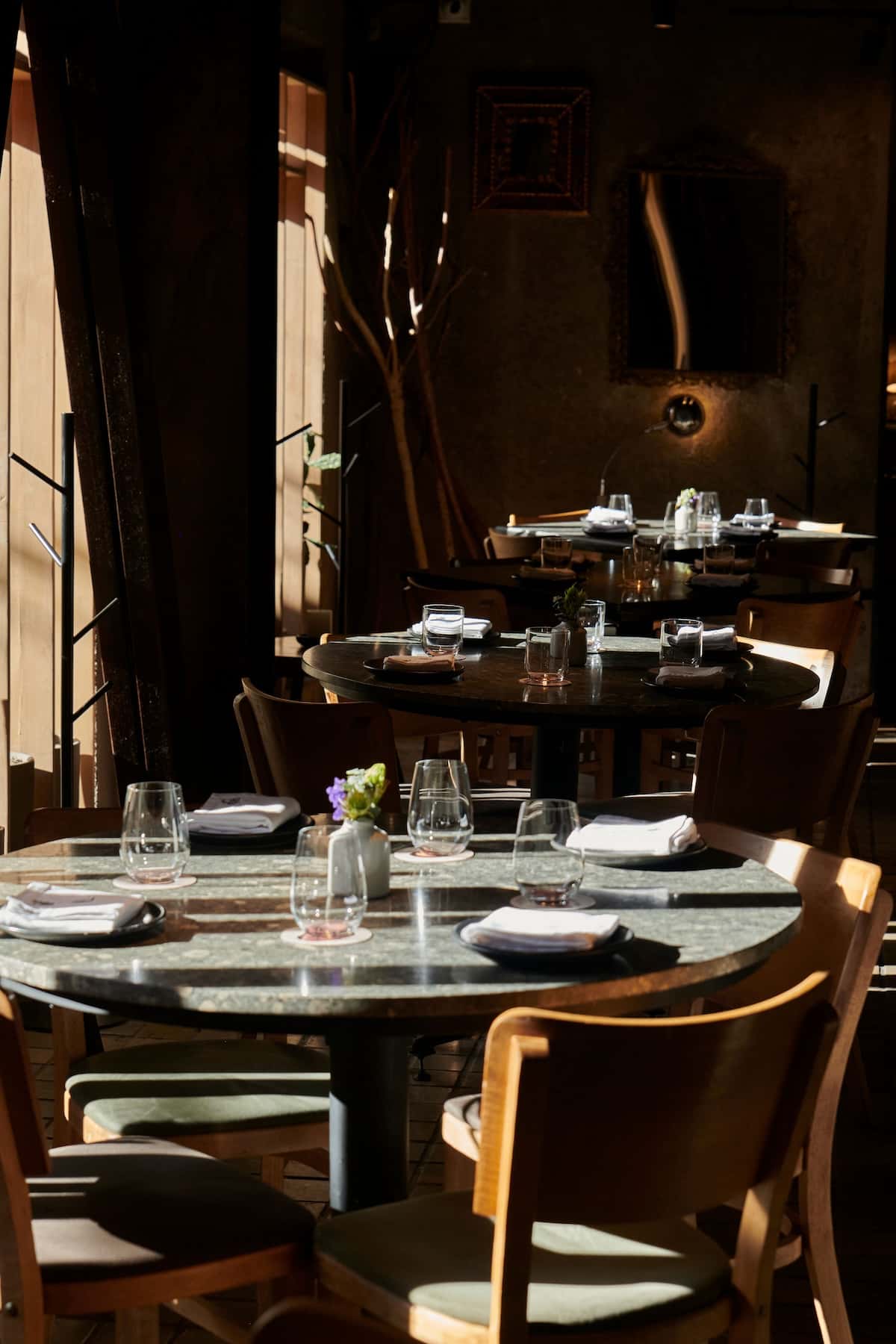
The Controlled Chaos Of The El Chato Kitchen
It’s a rare moment of meditation. The kitchen at El Chato runs on controlled chaos. There’s a time-lapse online somewhere, of the team swirling around him, while Álvaro remains steadfastly at the center of it all. Only, you assume it’s a time-lapse. It could just be a video, considering the speed things move at here at El Chato.
When he is on the move, Álvaro prowls Colombia’s diverse regions like a hungry animal searching for his next meal. From coastal mangroves to Andean highlands to jungle floors, he’s not just looking for ingredients but for possibilities – for things forgotten or never tried in the first place. “I’m not interested in recreating the dishes my grandmother made,” he says bluntly. “I’m interested in ingredients my grandmother never imagined using.”
His producers aren’t mere suppliers in his eyes. They’re accomplices in a culinary revolution. Many now grow things specifically for him that weren’t being cultivated before his intervention. This approach goes beyond the now-clichéd farm-to-table ethos. It’s more radical, actively reshaping Colombia’s agricultural landscape one experimental plot at a time, like at Vida Organica Finca Tagua farm we visit a couple of hours from the restaurant.
Here, they’re methodically re-wilding the landscape with endemic species that thrived before industrial agriculture took over, while simultaneously experimenting with potential ingredients for El Chato’s innovative menu.
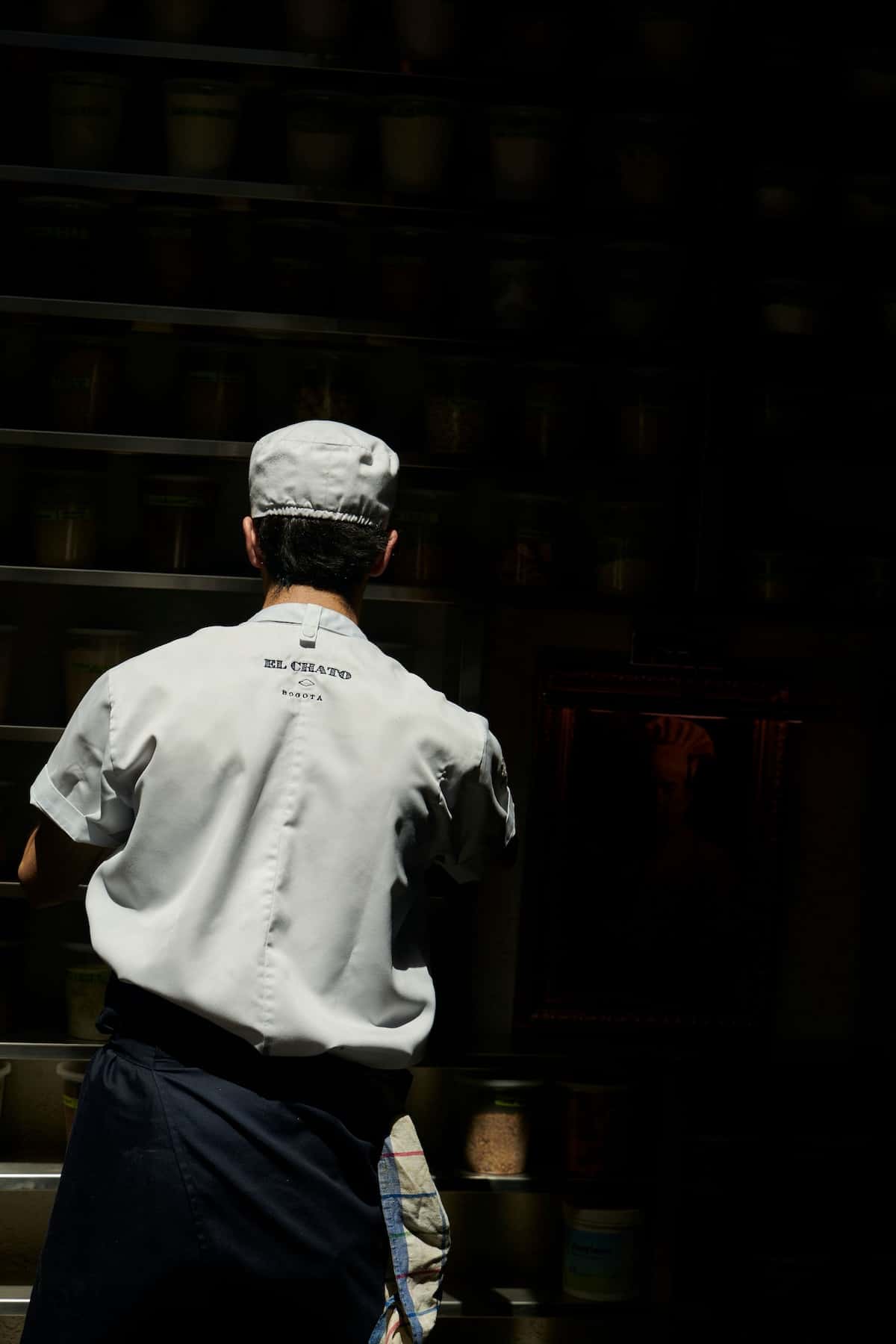
Making Things More Distinctly Colombian, More Unapologetically Himself
Álvaro Clavijo treats these farmers with the respect he rarely received early in his own career. He remembers vividly what it’s like at the bottom. This memory influences how he structures his kitchen team – not as a traditional brigade in the classic sense, but as a collective of determined souls like himself. People with something to prove. Together they push boundaries until they’re about ready to break, then rebuild them in their own image.
And so success found him anyway, despite – or perhaps because of – his rebellious approach. El Chato earned a place on The World’s 50 Best Restaurants list and climbed eight spots in 2024, to a heady no.3. He’s visibly uncomfortable with the attention. Like any good punk, mainstream acceptance makes him suspicious of his own work. So he responds by pushing harder, making things weirder, more distinctly Colombian.
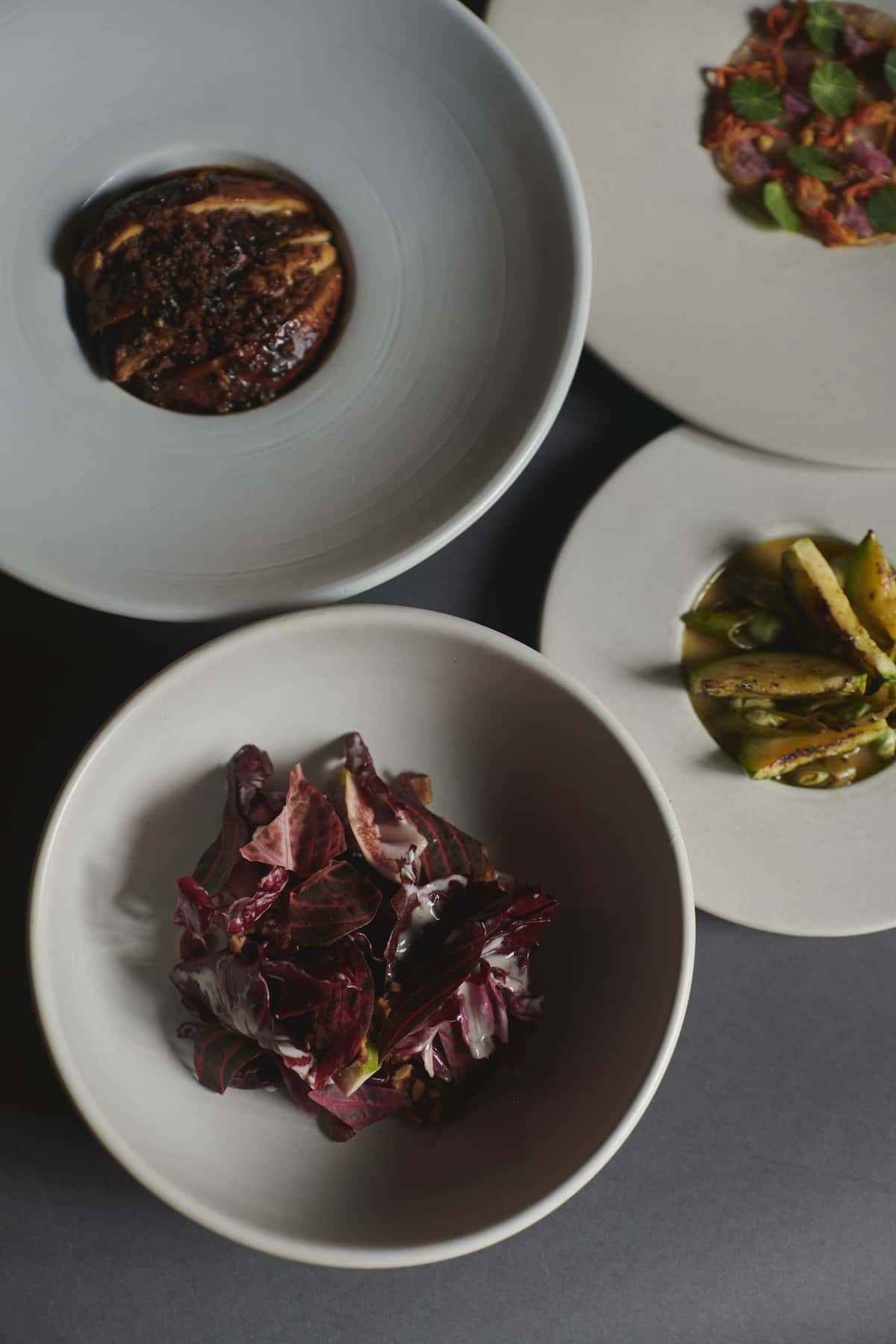
Timing Matters
The cocktail program follows these same unwritten rules: break traditions, highlight the overlooked, challenge expectations. The Sour Uchuvas combines gin with physalis – a native fruit most international bartenders wouldn’t recognize. It works because Álvaro Clavijo and the team refuse to create things that don’t. His standard is simple: it must be honest, it must be provocative, and it must work on the restaurant’s own terms.
His timing matters in Colombia’s broader cultural context. The country is still emerging from decades of conflict that kept regions isolated and ingredients unknown even to nationals. Colombia is in the process of rediscovering itself, and El Chato accelerates this process by forcing confrontations with identity and possibility through food.
Coastal Breezes, Highland Intensity And Jungle Vivacity Course Through The Menu At El Chato
Diners don’t just taste flavors at El Chato – they taste geography and history. Coastal breezes materialize in seafood preparations. Highland intensity comes through in root vegetables. Jungle vivacity explodes in fruits and insects. The menu changes ruthlessly with the seasons. Dishes disappear at their peak because Álvaro Clavijo doesn’t serve anything past its prime. Nothing overstays its welcome in his kitchen.
As night falls over Bogotá and the mountains disappear into darkness, El Chato’s dining room fills with people seeking something they can’t quite articulate. Downstairs, where they serve the a la carte menu, three generations sit around the same table – grandads in oversized suits, savvy daughters in chic business outfits, teenagers staring into their phones until the food compels them to look up.
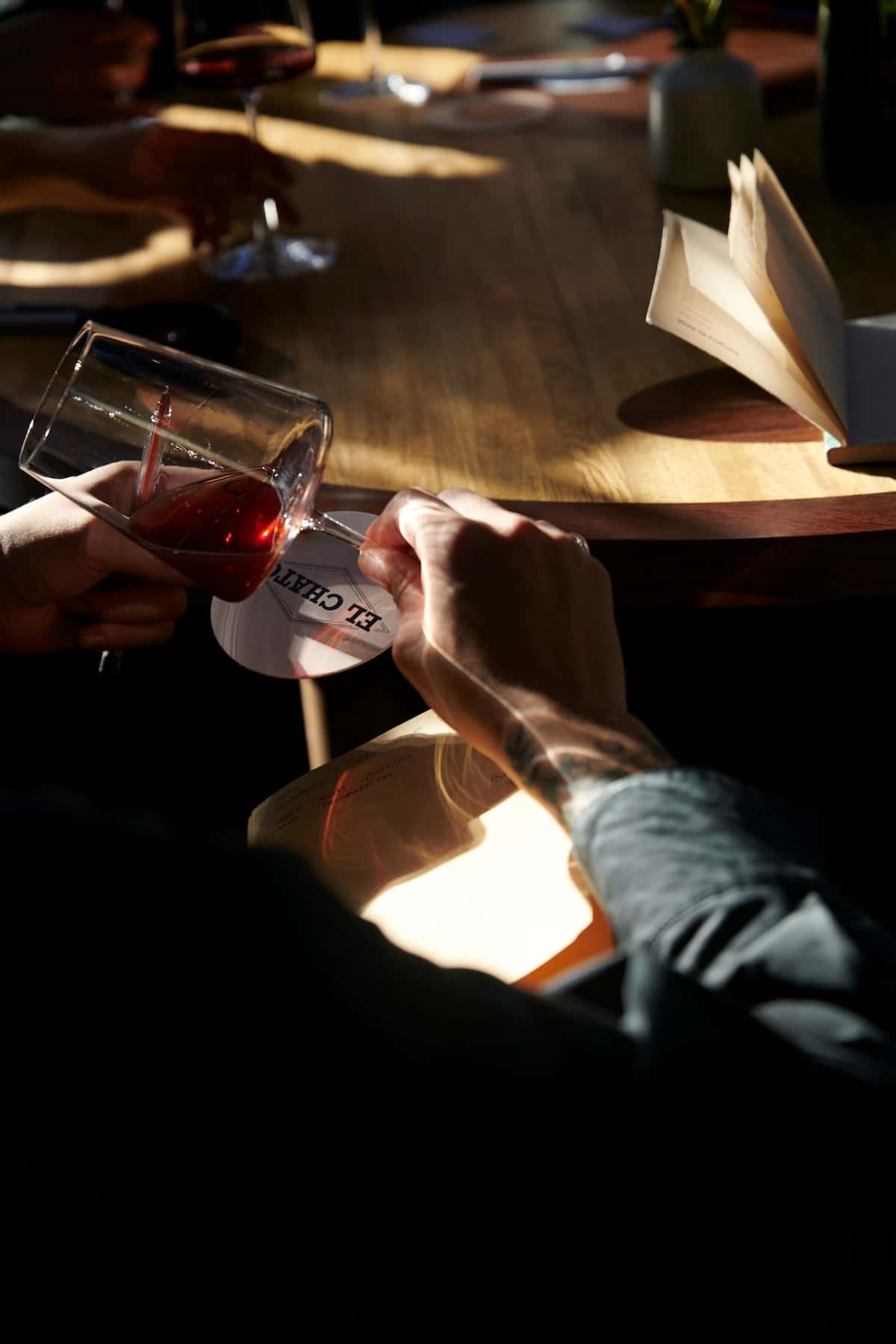
El Chato Is Distinctly Colombian But Entirely New
Álvaro Clavijo gives it to them anyway — something authentic but unexpected, traditional but radical, distinctly Colombian but entirely new.
He eyes the kitchen with restlessly, checking, tasting, correcting, never fully satisfied. A determined soul still proving something to a country that initially rejected him, to himself, and to anyone watching closely enough to see the fight still burning in him.
This isn’t a chef who simply returned to his roots for inspiration. This is a chef who had to leave to see his roots clearly, who came back to rip them up and replant them in soil of his own making. He forces diners to question what Colombian food was, what it is now, and what it could become.
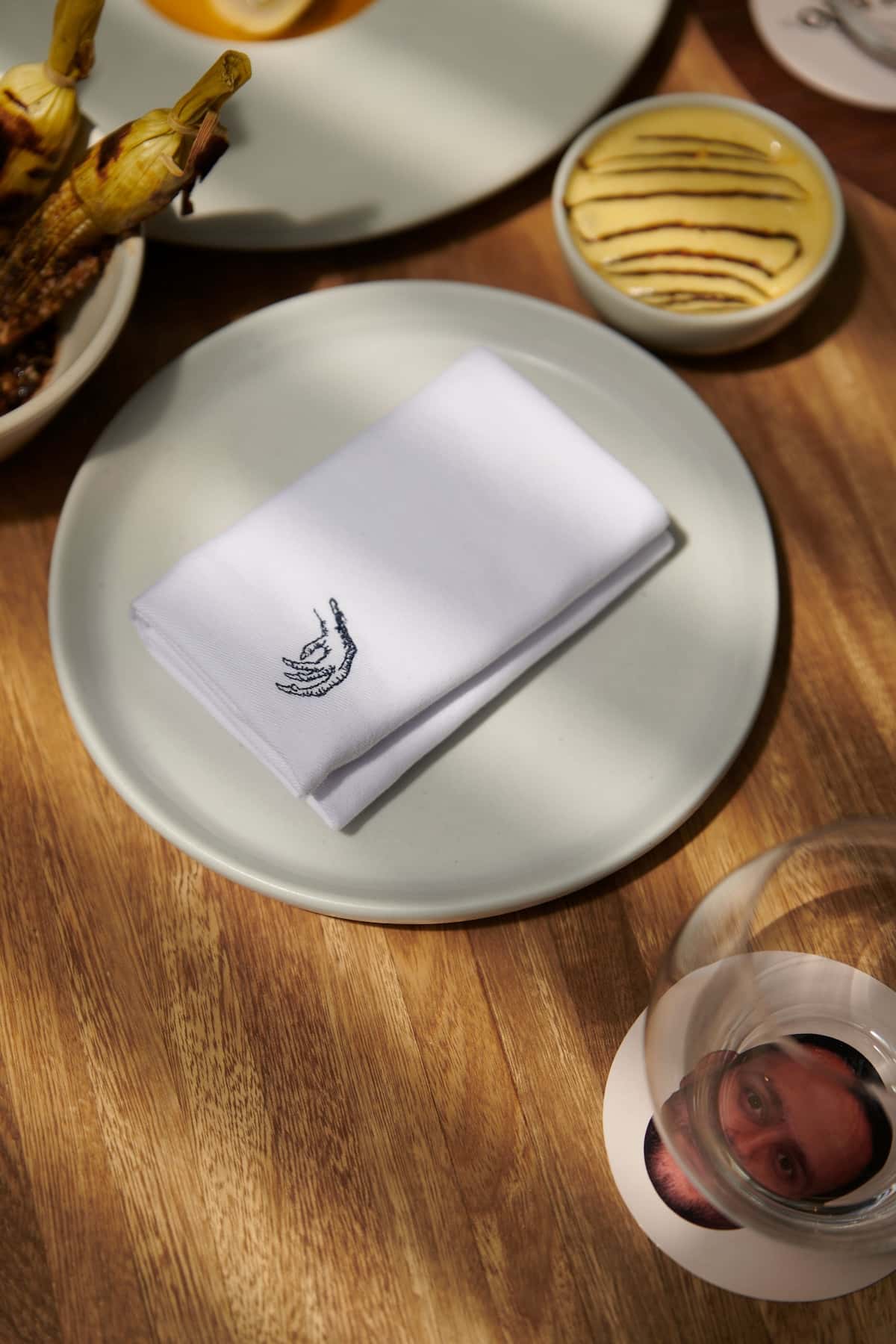
Álvaro Clavijo’s One Provocative Plate At A Time…
If you asked him about his success, he’d change the subject abruptly. Ask about an unusual ingredient and he’ll talk on and on with intensity. His hands move constantly as he speaks —working hands, the hands of someone who started as a dishwasher and has never forgotten the humility and hunger of those early days.
Then there’s that chicken foot logo (he explains that its the base for most of the restaurants stocks and his owes them everything). Clenched. Ready. Defiant. Just like its creator. Álvaro Clavijo doesn’t just cook Colombian food. In many ways, he is Colombia—complicated, resilient, raw, creative, damaged, determined. The mountains may hang over Bogotá watchfully, but for once, someone is staring right back at them, challenging their ancient power with something equally formidable: the punky attitude of a chef who returned home on his own terms and is rewriting his country’s culinary future one provocative plate at a time.


 The mountains hang over Bogotá watchfully. Below them, Álvaro Clavijo is busy not giving a damn about culinary expectations. The El Chato logo sums it all up perfectly: a chicken foot clenched like a claw machine that would probably flip a middle finger at you if only it could.
The mountains hang over Bogotá watchfully. Below them, Álvaro Clavijo is busy not giving a damn about culinary expectations. The El Chato logo sums it all up perfectly: a chicken foot clenched like a claw machine that would probably flip a middle finger at you if only it could.
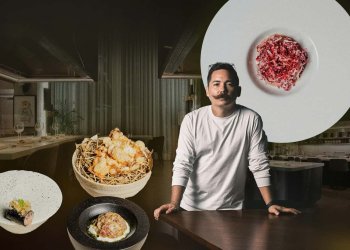





 Wink Hotels' is a new kind of Vietnamese hotel made for the modern traveler and ready to take on the world.
Wink Hotels' is a new kind of Vietnamese hotel made for the modern traveler and ready to take on the world.